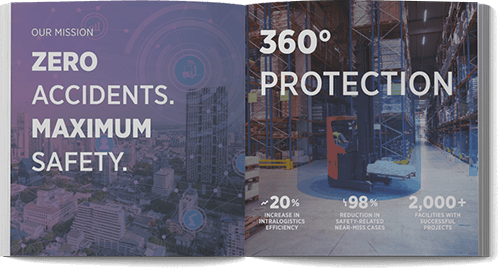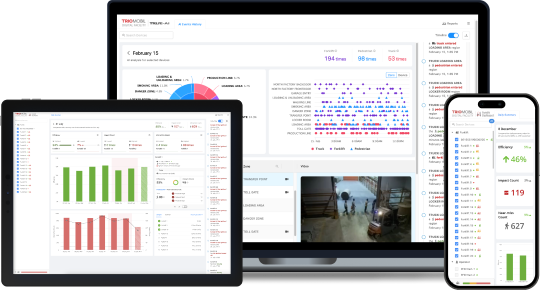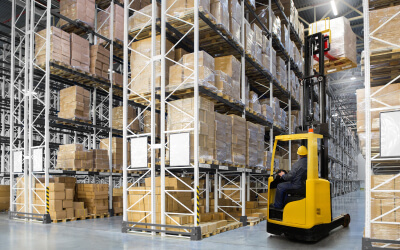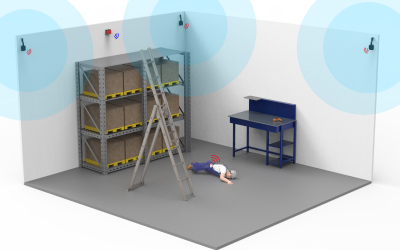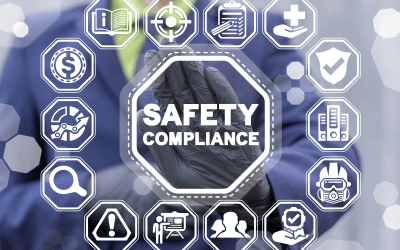Forklifts play a crucial role in various industries, facilitating the movement of heavy loads efficiently. However, their improper use or negligence can lead to severe accidents, with collisions being a significant concern. Forklift collisions threaten the operators and jeopardize the safety of other workers in the vicinity. Addressing this issue is paramount to ensuring a secure workplace environment.
Forklift collision avoidance systems are designed to prevent forklift overturning or colliding accidents in warehouses, manufacturing facilities, or storages. With a bustling traffic density of vehicles and pedestrians in these areas, collisions are likely to occur. However, they can be avoided with adequate precautions, such as leveraging IoT technologies.
In this article, we will focus on forklift collisions and how to increase workplace safety with forklift collision avoidance systems.
Understanding Forklift Collisions
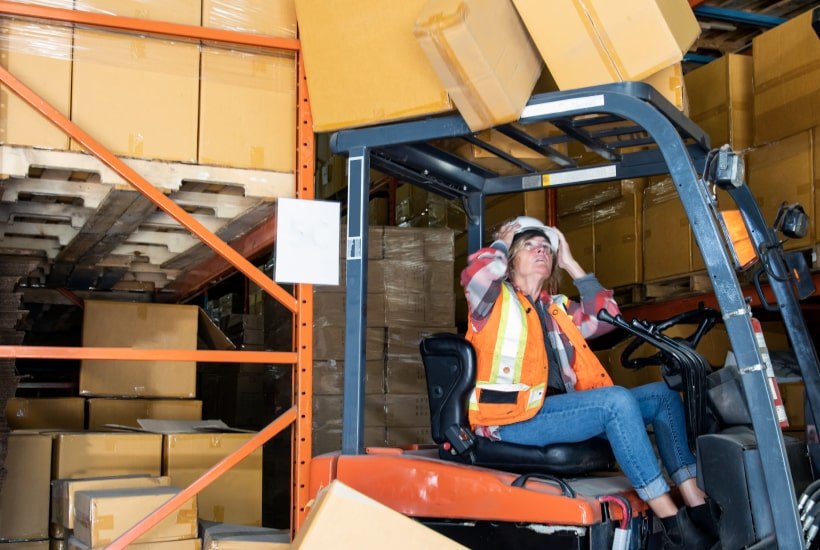
Forklift collisions are serious accidents that may cause financial damage, injuries, and, unfortunately, fatalities. In order to understand forklift collisions, it is vital to understand the nature of the forklifts at the beginning.
Acceleration & Maneuverability
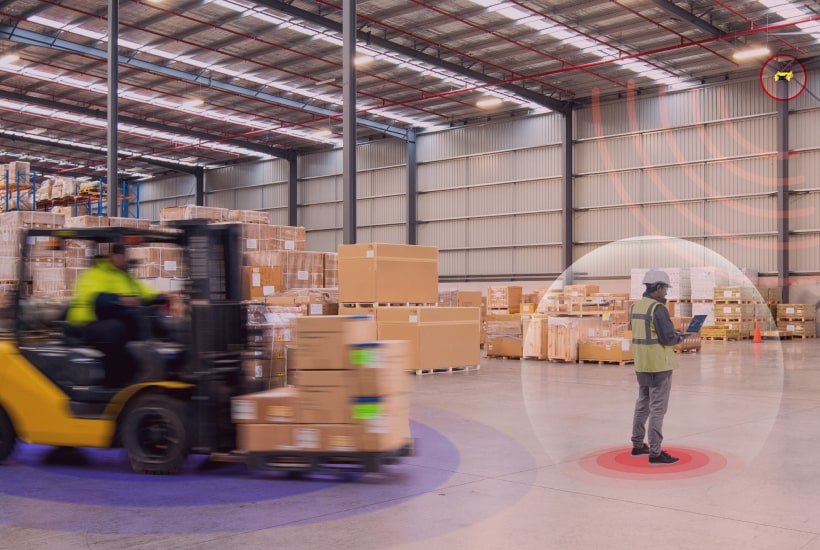
Forklifts can reach significant speeds with exceptional acceleration and maneuverability. However, unlike cars, they only have breaks on the front. It makes forklifts hard to stop or slow down quickly. Forklifts are also designed to navigate tight spaces, narrow aisles, and busy work environments. Both features help the workers decrease their loading effort and increase operation efficiency. But, at the same time, the same features may cause forklift accidents and collisions with pedestrians, the environment, or other forklifts.
Lifting Capacity & Balance
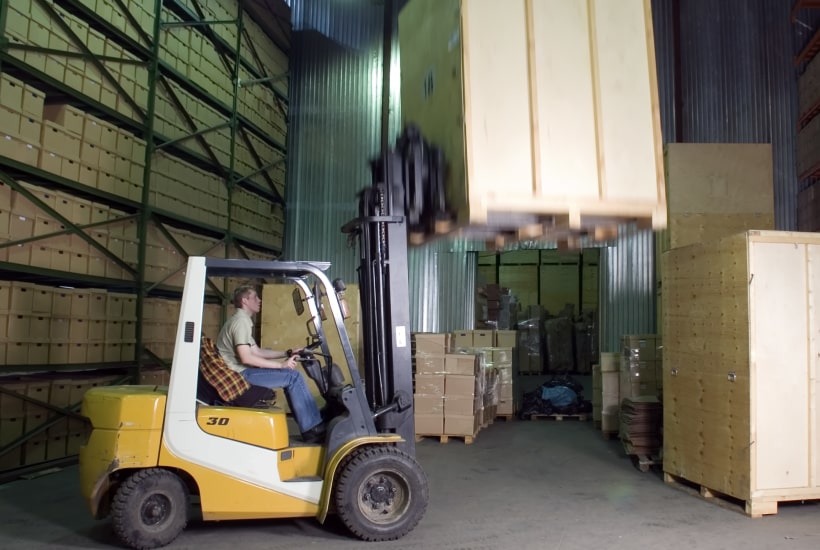
Forklift lifting capacity is another feature provided with forks and various attachments. They are designed in capacity and balance to lift and transport heavy loads. However, there are potential risks of accident and collision due to loading imbalance or insufficient safety measures among pedestrians.
Forklift Operator Visibility
Forklift operator visibility is very limited due to the nature of forklift functionality. Lifting attachments are placed on the front of forklifts because the operator needs to see the load lifted and carried. Blind spots, obstructed views, and poor lighting conditions increase the challenge of detecting potential hazards, increasing the risk of collisions and forklift-related accidents.
Why do Forklift Collisions Occur?
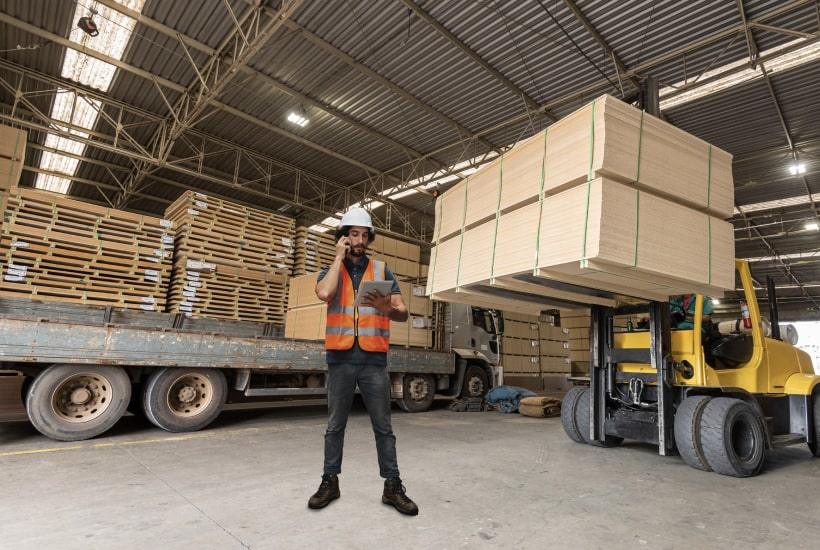
Forklift collisions can occur for various reasons, often caused by human factors, environmental conditions, and operational challenges. Understanding these factors is crucial for implementing preventive measures and fostering a safer workplace environment.
Here are common reasons why forklift collisions happen:
Maintenance Issues
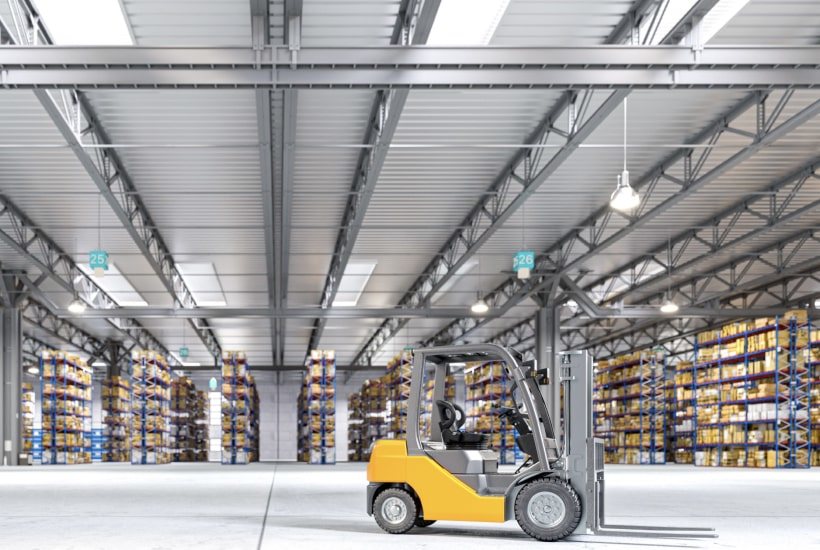
Forklifts are heavy machinery that require constant checks and inspections. If proper maintenance controls are not conducted regularly, forklifts may malfunction and cause accidents due to mechanical failures such as breaking and steering problems.
Lack of Proper Forklift Operator Training
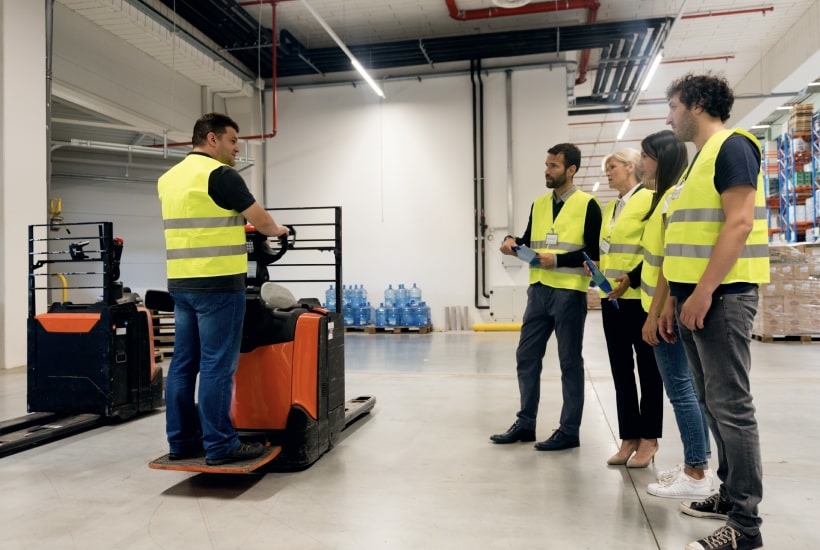
A proper forklift operator training is essential for a safe workplace. The comprehensive training includes the mechanics and functions of operating a forklift, safety protocols, load capacities, and the importance of situational awareness. Lack of proper training may dramatically increase forklift-related accidents.
Incorrect Loading
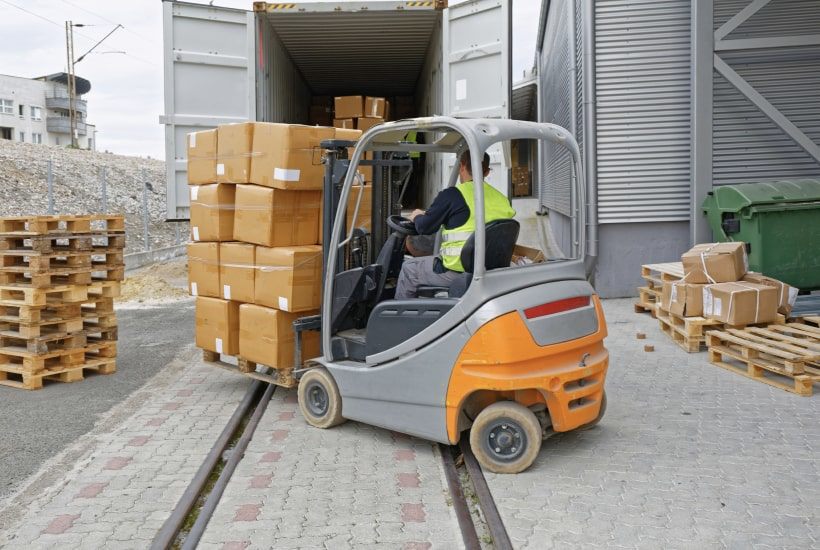
Improper loading techniques cause the majority of forklift overturning incidents. Overloading, improper securing, or loading imbalance may increase the chance of overturning while the forklifts are on the move. Also, considering the weight of forklifts, overturning may result in severe damage both for pedestrians and the machinery.
Human Error & Reckless Driving
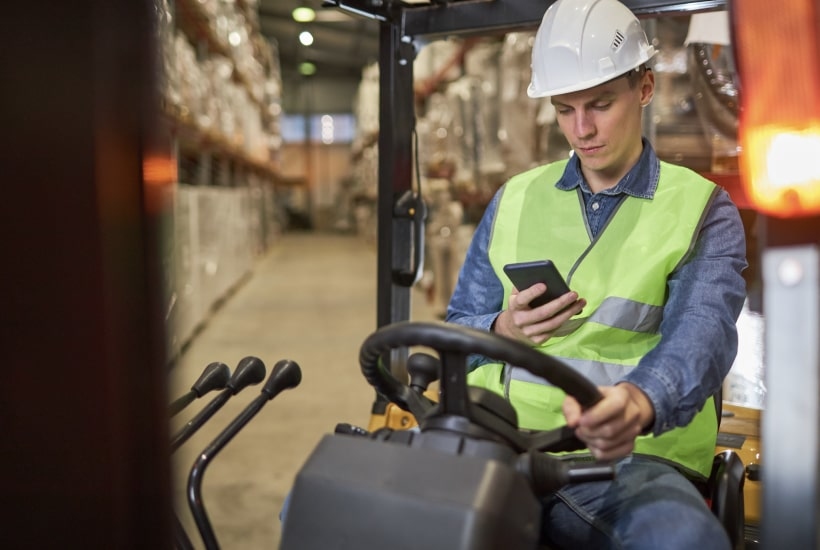
Reckless driving behavior, such as not stopping at the intersection points to check around or not adhering to the speed limits, can cause serious accidents. In addition, humans cannot oversee blindspots while operating a forklift, which is one of the main reasons for accidents.
Workspaces that are Prone to Accidents
Environmental factors such as lack of necessary lighting in dark warehouses, lack of traffic management in congested or high-risk areas, and uneven surfaces can cause serious forklift accidents.
What are the consequences of Forklift Collisions?
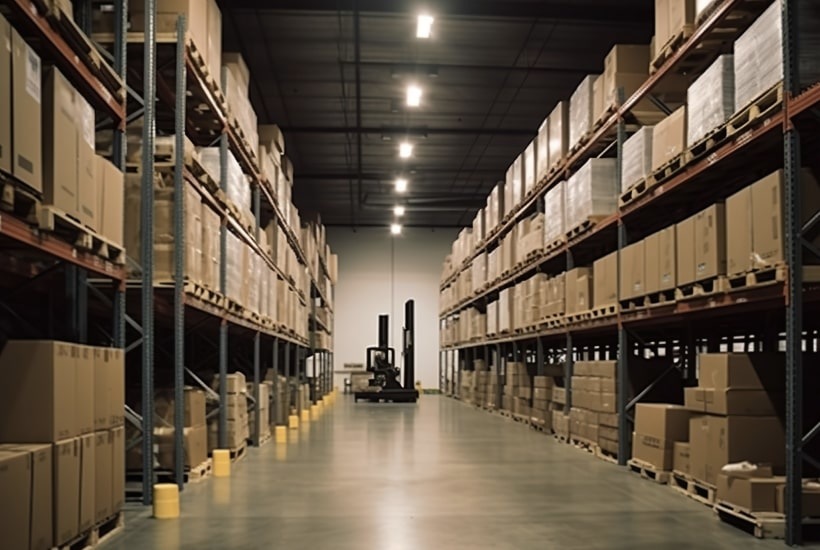
According to OSHA Forklift Pedestrian Accident Statistics, there are 34,900 major injuries and 85 forklift fatalities each year. Forklift strikes or collisions cause 10% of the 85 fatalities.
Besides the number of fatalities and injuries, forklift accidents bring about significant costs. These costs range from repairing the equipment damages caused by accidents and worker’s compensation to legal costs and fines. On average, a forklift collision may cost around $180,000.
It is essential to have a forklift collision avoidance system in place to avoid costing a human’s life and bearing all the costs associated with accidents.
What is a Forklift Collision Avoidance System?
A forklift collision avoidance system is a set of devices or sensors designed to enhance safety for the operators and pedestrians working around them. These devices detect potentially dangerous situations for forklift operators and pedestrians and warn them with audible or visual alerts to prevent any accident before it happens.
In addition, forklift collision avoidance systems could be arranged to automatically slow down the forklifts in designated areas, decreasing the risk of head-on collisions or overturns.
Another type of forklift collision prevention system, cameras, can be installed at the loading and unloading docks where there is a mixed type of forklifts, trucks, pedestrians, and other vehicles working together. With artificial cameras overseeing the predefined risky areas, the forklift collision prevention system works to detect pedestrians or forklifts and warns them in case of dangerous proximity.
How do Forklift Collision Avoidance Systems work?
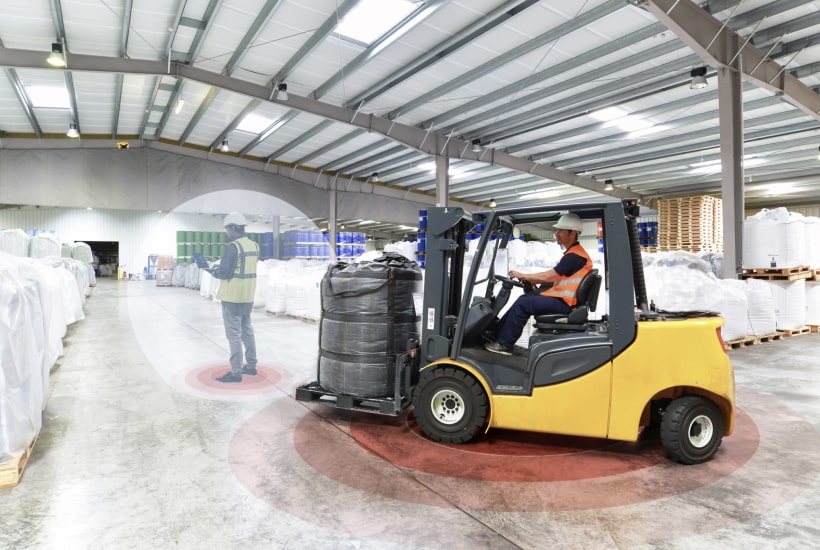
Collision avoidance systems for forklifts use various technologies to cover different safety needs.
One of the most critical technologies used for forklift collision avoidance systems is Ultra-wide Band (UWB) technology. Sensors and wearable devices with UWB are utilized for information transmission across a wide bandwidth.
Together with the Internet of Things (IoT), which makes it possible for devices without an internet connection to communicate with each other, they make most of the forklift collision prevention systems. These devices can connect and detect dangerous proximities.
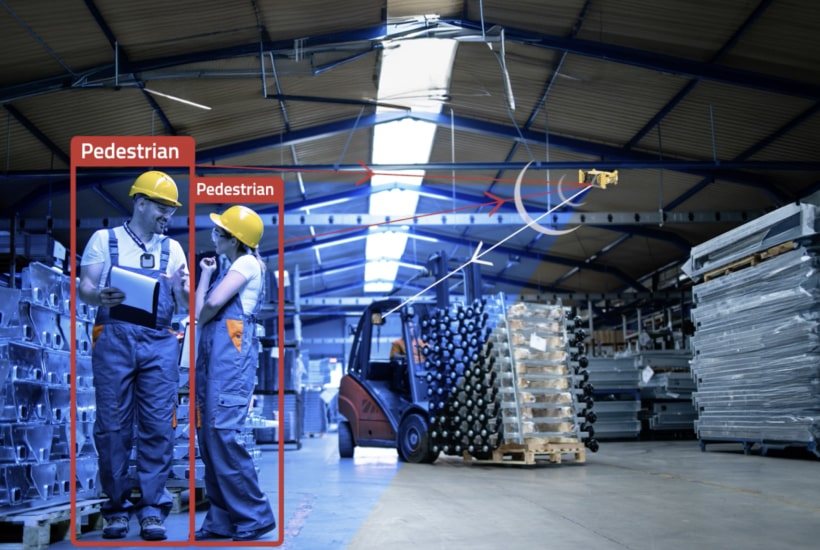
Types of Forklift Collision Avoidance Systems
Forklift collision prevention systems meet different safety requirements and are adaptable to specific industries' needs. Four major methods for forklift collision avoidance system are as follows:
Zone-Based Slow Down

There are some high-risk areas, such as intersection points or congested areas at warehouses or production sites. Zone-based slow-down systems are available to avoid collisions in these areas.
Anchors are placed on the doors and communicate with the sensors on the forklifts. While the forklift is approaching, forklifts automatically slow down to a safe speed.
Forklift - Forklift Collision Avoidance
To prevent collisions between two forklifts or other heavy industrial material equipment, proximity sensors and sirens are placed on the equipment.
These sensors detect each other with UWB technology and limit forklifts’ speed to a safe level while sirens alarm the forklift operators with audible and visual signs.
Forklift- AGV Collision Avoidance
Forklift-AGV or AMR collision prevention employs the same logic as forklift-forklift collision avoidance. When a forklift and an AGV are in close proximity, the system automatically limits the forklift’s speed to a safe level, in addition to providing audible and visual warnings to alert forklift operators.
Forklift - Pedestrian Collision Avoidance
Forklift pedestrian accident prevention systems are divided into two: tagless or tag-based collision avoidance systems.
The proximity sensors detect pedestrians with wearable safety tags, and forklift operators are warned with a visual warning and alarms while the forklift is automatically slowed down.
Key Components of Forklift Collision Avoidance Systems
Forklift collision avoidance systems are generally a combination of sensors, communication devices, or software. The specific components may vary depending on the safety requirements of the company or the manufacturer of the system, but here are some of the most common key components of forklift collision avoidance systems to enhance safety:
Proximity Sensors
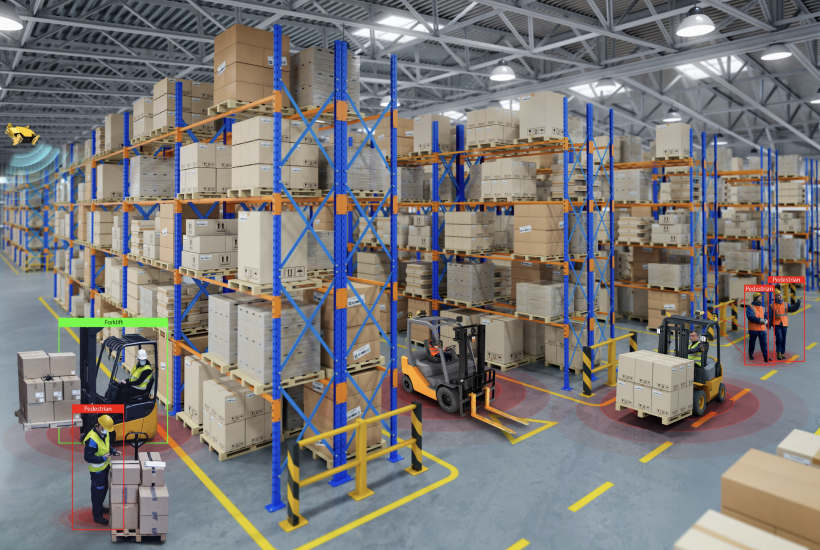
These sensors help to detect the distance of the objects around the forklifts or on their path. Different types of proximity sensors exist, such as ultrasonic, infrared, or radar sensors.
Cameras
Camera technology is rapidly evolving, integrating AI, machine learning, and sophisticated image processing. Specifically designed for forklift collision prevention, these cameras possess the capability to detect pedestrians in the vicinity or along the forklift's path. Their adaptable nature allows for strategic placement on the forklift itself or walls, ensuring comprehensive surveillance of the surroundings. Operating in real-time with millisecond responsiveness, they swiftly initiate preventive measures.
Moreover, these cameras offer a crucial advantage by instantly transmitting visual data to the cloud, establishing a seamless flow of information regarding the forklift's location and its surroundings. Advanced computer systems equipped with cutting-edge vision algorithms then meticulously interpret and analyze this invaluable data.
Forklift Safety Lights
Forklift collision avoidance systems contain audible and visual signals to warn forklift operators and the pedestrian workers around them if there is a dangerous proximity. These could be forklift safety lights or sirens to notify pedestrians that a forklift is approaching or alarm the forklift operator if there is a dangerous proximity.
Collision Detection Software
Sensors on the forklifts transmit data to intelligent algorithms within the forklift safety unit to detect potential collisions. These algorithms can analyze the inputs sent by the sensors and trigger alarms.
Forklift Operator Interface
With a smart screen inside the cabin of the forklift, operators can get real-time information about their surroundings in case their vision is limited by the load they are carrying or the lighting conditions.
Integration with Forklift Controls
The forklift collision avoidance system may be integrated with the forklift’s control system, allowing for automatic slow-downs or interventions to prevent collisions.
Forklift Telematics and Communication Systems
Forklift collision prevention systems can be integrated with communication modules to transmit data in real-time. This data can then be accessed through a dashboard and facilitate remote monitoring and management of the forklift.
Benefits of Implementing a Collision Avoidance System
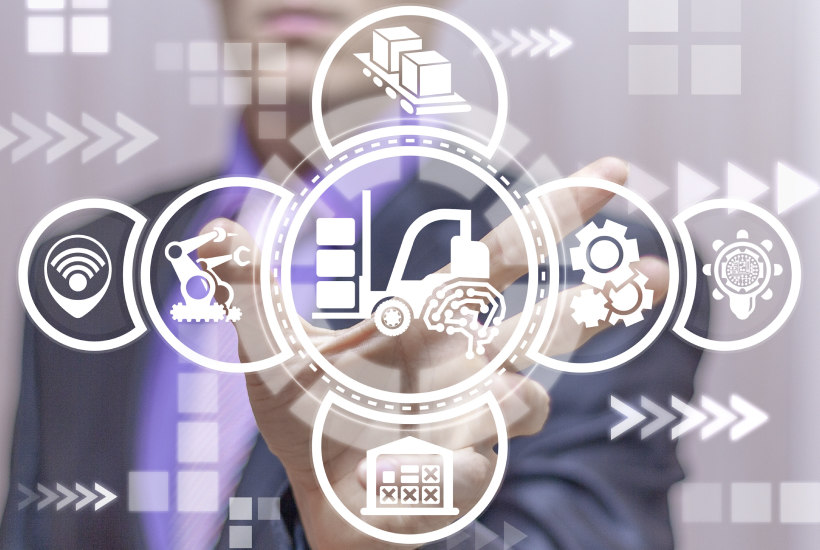
Establishing a collision avoidance system is essential for the safety of industrial operations and workers, and it offers various benefits as follows:
- Reduced number of accidents: By taking necessary precautions to avoid accidents, companies can reduce the rate of near-misses and accidents.
- Reduced operational costs: Collision prevention systems reduce operational costs by decreasing downtime and equipment damage. They also save companies thousands of dollars in fines and medical and legal costs.
- Increased operational efficiency: By making sure that the traffic within the facilities is effectively managed, collision avoidance systems for forklifts elevate operational efficiency.
- Elevated safety: By proactively taking necessary measures against collisions, these systems increase safety at the production sites.
Trio Mobil’s Forklift Collision Avoidance Systems
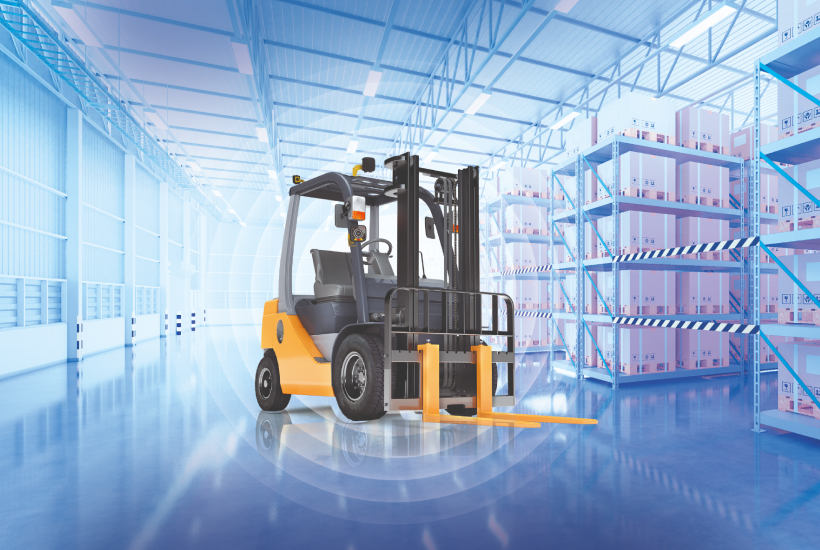
Forklift collision detection systems elevate safety in industrial operations and prevent forklift and pedestrian interactions. They are comprised of different key components and utilize different technologies to meet the specific requirements of the different sectors.
Trio Mobil offers a comprehensive product portfolio of forklift collision avoidance systems integrating cutting-edge UWB and IoT solutions. Our modular systems offer a fast and easy installation with plug-and-play features and adapt as the safety requirements evolve.
For more detailed information about our cutting-edge, modular, plug-and-play solutions, you can browse our website or request a demo to see how our forklift safety system works.
